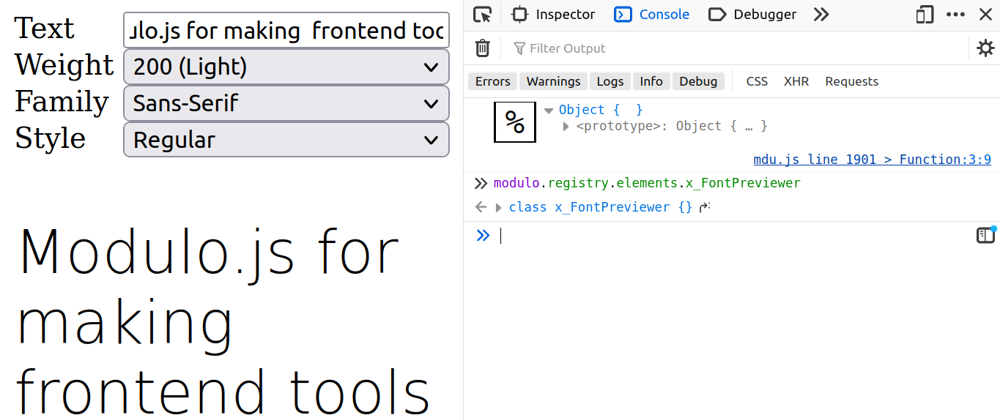
Quickly splitting state into global stores
In the previous tutorial, I showed how to use the -store= attribute. In this tutorial, I'll show how to have multiple State CParts in a single Component so that you can mix private state data with a public state store that you subscribe to.
If you are new to Modulo.js, then read the next section. Otherwise, jump down to the "good stuff" below.
Wait, what is this 2000-line framework, Modulo.js?
Modulo.js is a solution to a hard challenge: How can we make a very tiny, robust, useful framework in 2000 lines of understandable code? Basically, how do we build frameworks that aren't mysterious labyrinths of node_module dependencies? A Vue/Svelte/React-lite framework a single, easy-to-read file is appealing to beginners and wizened old-head hackers alike! Modulo.js is a single 2000 line file without any dependencies. It is HTML-first, and browser-first, and integrates with only a few lines of code in any HTML file. It immediately enables you to write productive Web Components with many modern features. Check it out: ModuloJS.org
Splitting private state into pseudo-global store
As with the previous tutorial, let's take the "MVC TODO" app in Modulo.
Doing the split
For a TODO app hooked up to a global store, the State looks like this:
Now, let's split the store into two CParts using the -name= preprocessor attribute to give a custom name to one of them:
Now we have two CParts total, one for the text (which we keep private, since that's the default when you don't have a -name), and one for the list (which we'll keep as a public store).
Patching up references
Steps
There are the two steps for whenever you want to give a custom name to a CPart.
- Step 1: Use the
-nameattribute to rename, and - Step 2: Change all references to the new name in the Template, Script, and other Component Parts
Patching up the Script CPart
We can use these steps to start patching up references:
To recap, the two important things we did with this split: 1) the -name= attribute to rename the second shopping list, and 2) that the shopping list then gets used as shopping_list.list.push() in the addItem function in the Script tag.
Patching up the Template CPart
So, we've already patched up Script, let's now patch up Template. We'll need to change it in only one spot: The {% for %} template-tag loop. This is because the other reference to state (notably, the [state.bind] directive) is fine, since it is referring to the default / private state anyway. See below:
All together: Web components which mix private state and public shared store data
For a complete example, try saving the snippet below as an HTML file, then open using your browser. Since it has no dependencies other than the 2000 line JS file, you can try out the demo without anything else (not even a test server is needed).
And in the browser:

Conclusion
Hope this code is useful! Next time I'll start going over the many ways to bring in extra data or code using another preprocessor: -src=
🗣️ Comments
Commenting available on dev.to:
View Comments (dev.to) Quickly making a font picker tool
Quickly making a font picker tool Creating a shadow animation adjustment tool
Creating a shadow animation adjustment tool Building a text-shadow design tool
Building a text-shadow design tool